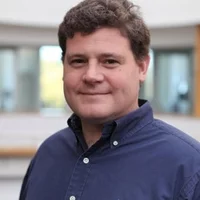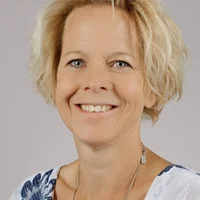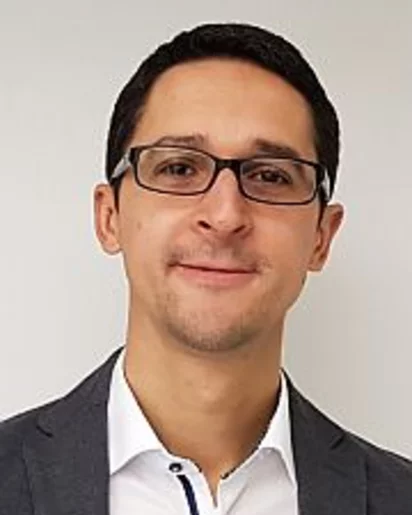Biography
Alexandre Trisorio is the head of the Swiss Free Electron Laser (SwissFEL) gun laser group at the Paul Scherrer Institut since July 2019. He got his MSc in Optics and Photonics from the University Paris Sud (Orsay-France) in 2005. He did his PhD in Physics at the University Paris Sud in 2008 under the supervision of Prof. Gerard Mourou (Nobel Prize in Physics 2018) developing a CEP stable, few-cycle, Titanium Sapphire laser source for high harmonic generation on solid state targets. He worked in the industry (Amplitude Systèmes, Pessac-FRANCE) as R&D engineer on high-power, femtosecond, Ytterbium laser systems using rod-type photonic crystal fiber technology. In 2021, Alexandre Trisorio was certified as Project Manager Professional (PMP) by the Project Management Institute (PMI). Alexandre Trisorio joined the Paul Scherrer Institut in 2010 as R&D engineer inside the SwissFEL laser group. He developed innovative spatial and temporal laser pulse shaping techniques and advanced concepts and architectures for photo-injector drive lasers. Alexandre Trisorio is co-leading the laser-based SwissFEL seeding project in order to upgrade the SwissFEL capabilities generating, X-ray, fully coherent FEL pulses.
Institutional Responsibilities
Integrated planning, funding and line management of the SwissFEL Gun Laser Group. This includes development/operation and maintenance of advanced laser sources and optical systems linked to the SwissFEL facility: the gun lasers and the future seed lasers. Alexandre Trisorio and his group are actively involved in the development of laser-based seeding scheme of the SwissFEL soft X-ray line in order to generate attosecond, coherent FEL pulses. The Gun Laser Group consists of 3 laser engineers and a technician.
Scientific Research
Alexandre Trisorio research is focused on innovative laser technologies and laser-based, electron manipulation techniques. Projects includes the development of laser sources using well-established laser materials but with innovative direct diode pumping schemes. This can open the path to new trends in the academic as well as in the industrial laser community. Moreover, his research is focused on new methods to manipulate accelerators electron beam with femtosecond lasers with a high level of flexibility and reliability. This will allow to produce coherent, attosecond FEL radiation in the soft X-rays at the SwissFEL Athos line.
Selected Publications
For an extensive overview we kindly refer you to our publication repository DORA.
Overview of SwissFEL dual-photocathode laser capabilities and perspectives for exotic FEL modes, S. Bettoni, A. Cavalieri, A. Dax, E. Divall, C. P. Hauri, S. Hunziker, M. Huppert, M. Kaiser, M. Paraliev, C. Sydlo, C. Vicario and A. Trisorio, High Power Laser Science and Engineering, 1-51. (2021). doi:10.1017/hpl.2021.36
SwissFEL is a compact, high-brilliance, soft and hard X-ray Free Electron Laser (FEL) facility laser that started user operation in 2019. The facility is composed of two parallel beam lines seeded by a common linear accelerator (LINAC), and a two-bunch photo-injector. For the injector, an innovative dual-photocathode laser scheme has been developed based on state-of-the-art Ytterbium femtosecond laser systems. In this paper, we describe the performance of the SwissFEL Photo Cathode Drive Lasers (PCDL), the pulse shaping capabilities as well as the versatility of the systems, which allow many different modes of operation of SwissFEL. The full control over the SwissFEL electron bunch properties via the unique architecture of the PCDL will enable in the future the advent of more advanced FEL modes; these modes are, but not restricted to, the generation of single or trains of sub-fs FEL pulses, multi-color FEL and finally the generation of fully coherent X-ray pulses via laser-based seeding.
Impact of laser stacking and photocathode materials on microbunching instability in photoinjectors, S. Bettoni, M. Csatari Divall, R. Ganter, M. Pedrozzi, E. Prat, S. Reiche, T. Schietinger, A. Trisorio, C. Vicario, and V. Goryashko, Phys. Rev. Accel. Beams 23, 024401 (2020). doi: 10.1103/PhysRevAccelBeams.23.024401
Microbunching instability is a well-known phenomenon that may deteriorate the performance of accelerators. At SwissFEL, the free-electron laser (FEL) facility operating at the Paul Scherrer Institute (PSI), the initial design stipulated a shaping of the photocathode laser output to obtain a flat-top longitudinal profile. This scheme is attractive in terms of the uniformity of the beam properties along the bunch. The drawback of this approach is that some unavoidable modulations are generated along the laser pulse. We investigate, both experimentally and by numerical simulations, the longitudinal dynamics of a beam obtained illuminating a copper cathode with a laser profile shaped by the stacking technique. We find that the microbunching instability gain renders the use of the stacking technique not efficient to run a free-electron laser facility using as photocathode a material with a short response time. We experimentally demonstrate that the use of a material with a longer response time efficiently damps the structures originating from the laser profile obtained with stacking, and helps to improve the performance of the facility. In general, this is an approach to minimize the microbunching instability at any FEL (also not using stacking) or at least reduce the use of other countermeasures, which, such as the laser heater, may degrade the final FEL performance.
Experimental demonstration of two-color X-ray free-electron-laser pulses via wakefield Excitation, S. Bettoni, P. Craievich, A. Dax, R. Ganter, M. W. Guetg, M. Huppert, F. Marcellini, R. Neto Pestana, S. Reiche, E. Prat, A. Trisorio, C. Vicario, and A. A. Lutman, Phys. Rev. Accel. Beams 24, 082801 (2021). doi: 10.1103/PhysRevAccelBeams.24.082801
Several beam manipulation methods have been studied and experimentally demonstrated to generate x-ray multipulses in free-electron-laser (FEL) facilities, advancing the fields of material science, molecular physics, and photochemistry by enabling x-ray pump/x-ray probe experiments. We have demonstrated a novel method to generate hard x-ray multipulses using a hybrid compression scheme. Compared to other methods, this approach minimizes the time jitter among the FEL subpulses, produces large power FEL subpulses, is suitable for high repetition rate machines, since it does not imply the generation of losses, and it works at short and hard x-ray FEL wavelengths as well. All of these aspects make this approach attractive for the novel FEL facilities aiming to explore the hard x-ray region and to work at high repetition rate.


